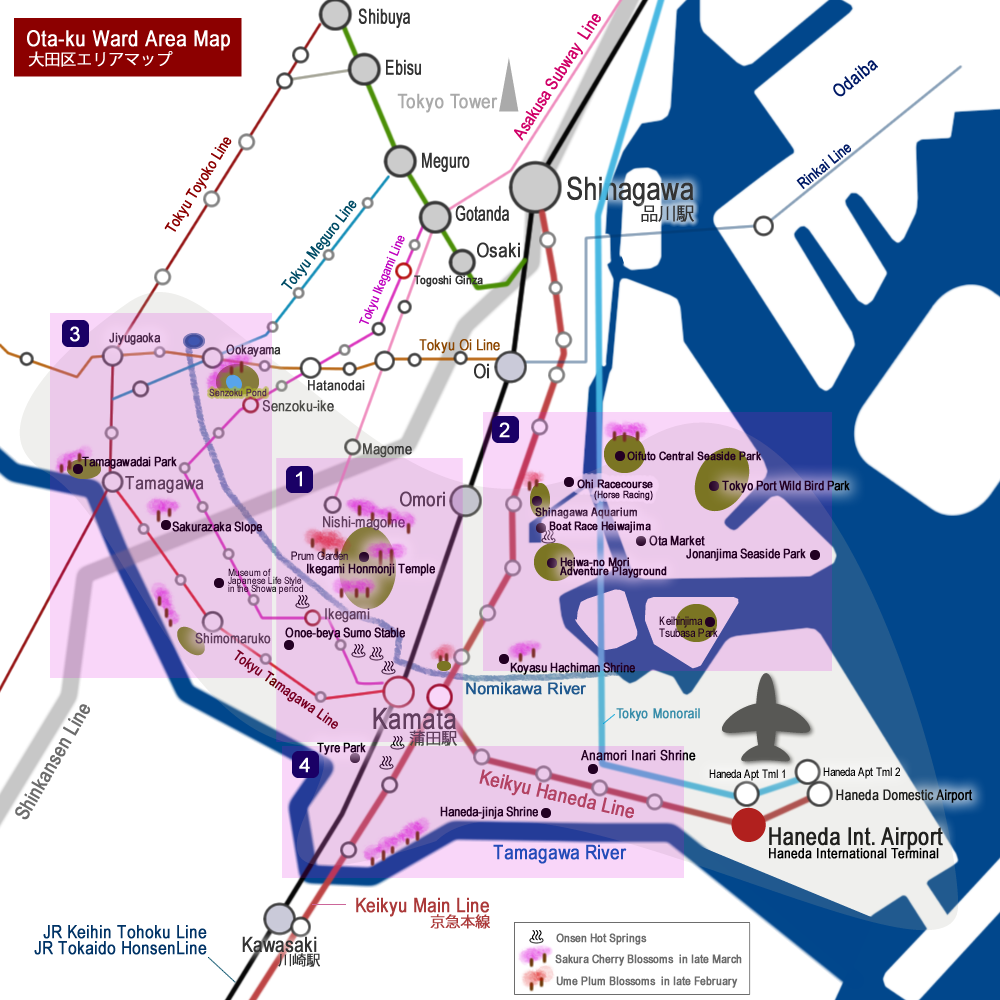Ota City area - the home of Haneda International Airport
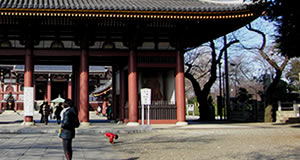
If you're looking for something off the beaten path in Tokyo, how about stopping over at Ota City and the nearby Shinagawa area? This area is not only for accommodation but also for exploring attractions of Tokyo, differ from what you find in the central downtown area.
Overview of Ota City (Ota-ku Ward)
Ota City or Ota-ku ward 大田区 is one of 23 special wards of Tokyo, is located on the shore of the Tokyo Bay in the south of Central Tokyo, Though Ota-ku Ward has been residential and small factory areas, there are pockets of historic sites, including numerous temples and shrines as well as burial mounds from ancient times. On the shore of the Tokyo Bay are greenery parks and various recreation facilities, and the Tamawaga riverside is blessed with Sakura cherry blossom viewing spots (at full bloom around the end of March). The hilly area in west Ota-ku was beloved by many renowned writers and artists in the past.
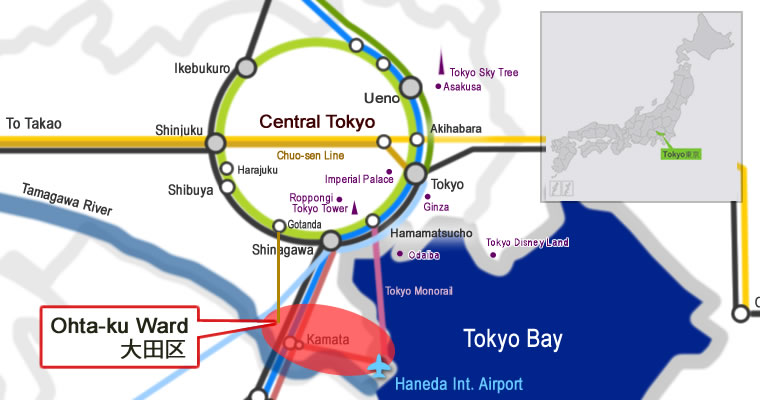
Ikegami Honmonji Temple
Ota-ku Ward has convenient transportation links
Taking the Keikyu Airport Line from Haneda International Airport (Haneda Airport International Terminal) it takes only 5 or 8 minutes to reach Keikyu Kamata Station, the hub Station on the Ota-ku ward.
The train/bus access in this district is pretty good, allowing to travel east to west or south to north between towns in Ota-ku within 15 to 25 minutes.
It is also easy to reach JR Shinagawa Station 品川駅 by train where you can take the Shinkansen Bullet Train heading for western regions of Japan.
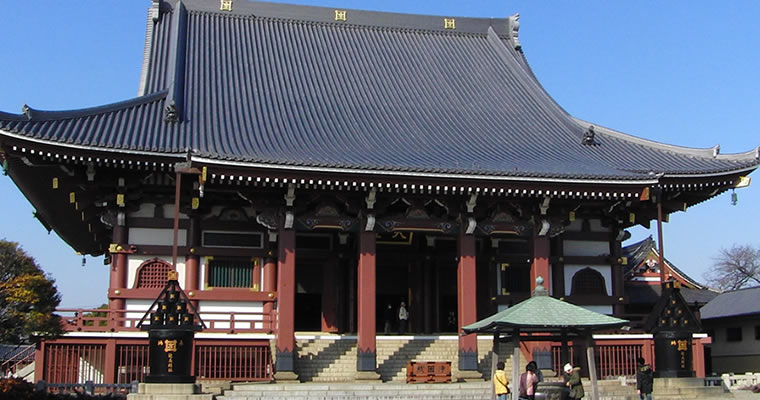
Explore Ota City and the vicinity to find everyday attractions of Tokyo
Ota-ku area can be divided into 4 areas as the map shows. Some attractions in Area 2 are actually located in Shinagawa-ku ward in the north.
Google Maps | Ota ward
https://goo.gl/maps/GUagMNpjS552
Area 1
Kamata Town and Kamata Stations 蒲田エリアと蒲田駅
Kamata is the hub town of Ota-ku ward, directly connected from Haneda International Airport by train and bus. Kamata town has three train stations;
1. Keikyu Kamata Station 京急蒲田駅 on the Keiyu Line 京急線 leading to Haneda Airport
2. JR Kamata Station JE蒲田駅 leading to major stations on the JR Line such as Shinagawa Station, Tokyo Station, and Yokohama Station.
3. Tokyu Kamata Station 東急蒲田駅 (connected to JR Kamata Sta.) on the Tokyu Line 東急線 leading to towns in west Ota-ku.
It is about 700m(a 10-to-15-min walk distance) between JR Kamata Station and Keikyu Kamata Station. The bus terminal is located near JR Kamata Station (West Exit).
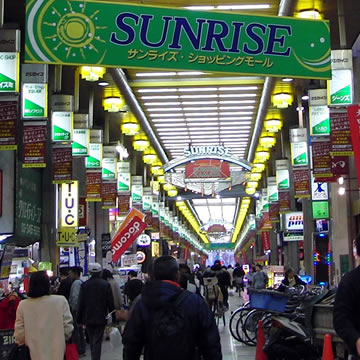
5. Nanushi-no-taki Garden
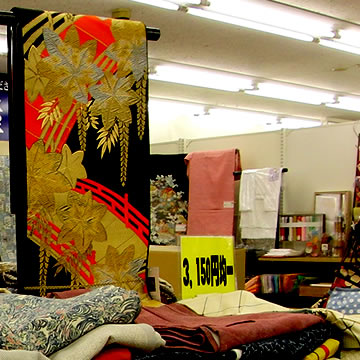
Many commuters living in Ota-ku change trains or take a bus at Kamata Station on the way to their home, The square around Kamata Station has been developed as a commercial area having shopping streets and Izakaya restaurants. Yuzawaya, one of the largest craft stores, has 5 buildings near JR Kamata Station (South Exit) where you can find unique items in traditional Japanese design, suitable to create Anime Cosplay things.
Kamata used to be a town of film-making like Hollywood. The Shochiku Film Company’s studio was there from 1920 to 1936, numerous masterpieces were created by directors including Yasujiro Ozu, whose movies have been inspiring many movie-creators even to this day. Though the atmosphere of those good old days is hardly found by now, Kamata is a good place to explore everyday attractions in Tokyo.

Five-story Pagoda built in 1608
Ikegami Honmonji Temple
池上本門寺
This large temple was built at the place where the Buddhist Monk, Nichiren Shonin entered Nirvana in 1282. The temple stands on the top of a hill with trees, patches of Sakura cherry blossoms in spring (late March), and colorful leaves in autumn. Entrance is free.
Ikegami Baien (Plum Garden)池上梅園
Lies next to Ikegami Honmonji Temple, this Ume Plum Garden is former residence and studio of Ito Shinsui, an artist of Japanese painting. 370 Ume trees bloom around the middle of February.
Admission: 100 JP Yen/adult, 20 JP Yen/child under 6-year-old
20-min walk from Ikegami Station 池上駅 on the Tokyu Ikegami Line.
10-min walk from Nishimagome Station 西馬込駅 on the Toei Asakusa Subway Line.
Official website | Ikegami Honmonji Temple
https://honmonji.jp/
Event News
Onsen Hot Springs
Kamata town is blessed with hot springs and there are public bathing facilities called Sento (Spa house) using the natural hot water springs. The hot springs in Kamata are called Kuroyu or black hot water, which comes from coffee-colored water containing plant-derived components (humic acid). Most hot springs in Tokyo have this kind of dark brown color.
Sento in Ota-ku
http://ota1010.com/
Area 2
Shinagawa Aquarium しながわ水族館
Shinagawa Aquarium is one of the most popular aquaria in Tokyo. This aquarium lies next to Shinagawa Kumin Koen Park しながわ区民公園 that includes various recreation facilities, a baseball ground, tennis courts, a day camping/BBQ site, and gardens with 400 cherry trees and 130 plum trees. In front of the aquarium is a traditional Japanese garden having a man-made seawater pond. The actual location of this aquarium and the park is not Ota-ku ward, but Shinagawa-ku ward.
Getting there
8-min walk from Omori Kaigan Station 大森海岸駅 on the Keikyu Honsen Line
or
15-min walk from Omori Station 大森駅 on the JR Keihin Tohoku Line
Official website | Shinagawa Aquarium
https://www.aquarium.gr.jp/
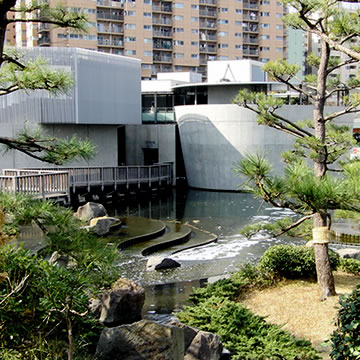
Shinagawa Aquarium
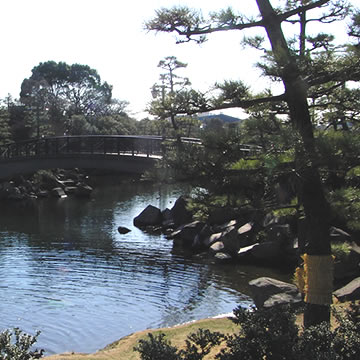
Japanese garden in front of the aquarium
Omori Furusato-no-hamabe Park 大森ふるさとの浜辺公園
This is a seaside park in Omori town, has a beach and a museum "Omori Nori Museum" (Admission is free). Omori town used to be a large center of Nori (seaweed sheets) production in Tokyo.
Getting there
15-min walk from Heiwajima Station 平和島駅 on the Keikyu Honsen Line
Tokyo Port Wild Bird Park 東京港野鳥公園
The park on the reclaimed land of Tokyo Bay, with a variety of natural settings that includes bushes and muddy flats in an area of 24.8 hectares. Some 120 different species of wild birds are observed throughout the year. It is a good place even for a walk and a picnic. Admission is 300 JP Yen/adult, 150 JP yen/child. Closed on Mondays.
Getting there
15-min walk from Ryutsu Center Station 流通センター駅 on the Tokyo Monorail
Official Webpage
Tokyo Port Terminal Corporation
https://www.tptc.co.jp/en/c_park/01_11
Oi Racecourse of TOKYO CITY KEIBA (Horse Racing)
東京シティ競馬
大井競馬場
One of the largest horse race track in Tokyo.
Getting there
2-min walk from Oi Keibajo-mae Station 大井競馬場前駅 on the Tokyo Monorail
or
12-min walk from Tachiaigawa Station 立合川駅 on the Keikyu Honsen Line 京急本線
Official Website |
TOKYO CITY KEIBA
https://www.tokyocitykeiba.com/
Boat Race Heiwajima 平和島ボートレース
Speedboat races are held at this racing course. Male and female riders race together and all the riders are supposed to maintain the adjustments of their own boat. Only riders who have combined ability as a rider and a mechanic can grasp the victory.
Getting there
10-min walk from Omori Kaigan Station 大森海岸駅 on the Keikyu Honsen Line
Official Websites | Boat Race Heiwajima
https://www.heiwajima.gr.jp/en/
Ota Market 大田市場
A complex of wholesale market handling fresh foods and flowers. Numerous imported flowers are gathered at this market for bidding. The market is open to visitors from 5:00 to 15:00.
Getting there
15-min walk from Ryutsu Center Station 流通センター駅 on the Tokyo Monorail
Official website |
Tokyo Central Wholesale Market
https://www.shijou.metro.tokyo.lg.jp/english/
Area 3
Senzokuike Pond 洗足池
A large pond located in Senzoku town in north Ota-ku has been depicted in an Ukiyoe woodblock print by Utagawa Hiroshige. The natural water running from springs around this area has created this pond. The pond is in Senzokuike Park that includes attractions; boating, water garden, historic monuments and shrines. Senzoku park is one of the best Sakura cherry blossom viewing spots in Tokyo. (Blooms around late March).
Getting there
1-min walk from Senzokuike Station 洗足池駅 on the Tokyu Ikegami Line 東急池上線.
Tamagawadai Park 多摩川台公園
The park with 6 hectares, lies in the hilly area along the Tamara riverside, includes a water garden, a hydrangea garden, walking paths, and the tombs dating from between the 4th and 7th centuries. On a clear, sunny day Mt.Fuji can be seen from the outlook deck. This park is also popular for Sakura cherry blossom viewing. (Blooms in late March).
Getting there
1-min walk from Tamagawa Station 多摩川駅 on the Tokyu Tamagawa Line / Toyoko Line / Meguro-sen Line.
Museum of in the Showa Era 昭和のくらし博物館
Built in 1951, this private house was opened to the public as a museum to exhibit the lifestyle of Tokyo in Showa era (1926-1989). Admission 500 JP Yen/adult. Open from 10:00 to 17:00. Closed on Mondays。
Getting there
8-min walk from Kugahara Station 久が原駅 on the Tokyu Ikegami Line
Or
8-min walk from Shimomaruko Station the Tokyu Tamagawa Line.
Official website
http://www.showanokurashi.com/
Onoe-beya Sumo Stable 尾上部屋
It is allowed to watch Sumo practice only from outside of the building.
Official website
https://www.facebook.com/onoe.beya/
Area 4
Rokugo Bashi Greenery Area 六郷橋緑地
A greenery area along the Tamagawa river. The road on the river bank is fringed with Sakura cherry trees. You will get a great feeling from cycling there in Spring.
Near this place is a shrine Rokugo-jinja 六郷神社 built in 1057.
https://rokugo.or.jp/
Getting there
10-min walk from Rokugo-dote Station 六郷土手駅 on the Keikyu Honsen Line.
Anamori-inari Shrine 穴守稲荷神社
Anamori-inari shrine was built in 1818 in order to pray for safety while the current airport site used to be a fishing village often suffered from flood. This shrine has now known for the god of good crops and prosperous business. A collection of small red Tori gates is a must-see.
Getting there
3-min walk from Anamori Inari Station 穴守稲荷駅 on the Keikyu Haneda Line
Official website
https://anamori.jp/
Related Information
OtaCity Official Website
https://ota-tokyo.com/
Shinagawa Tourism Association
https://shinagawa-kanko.or.jp/

